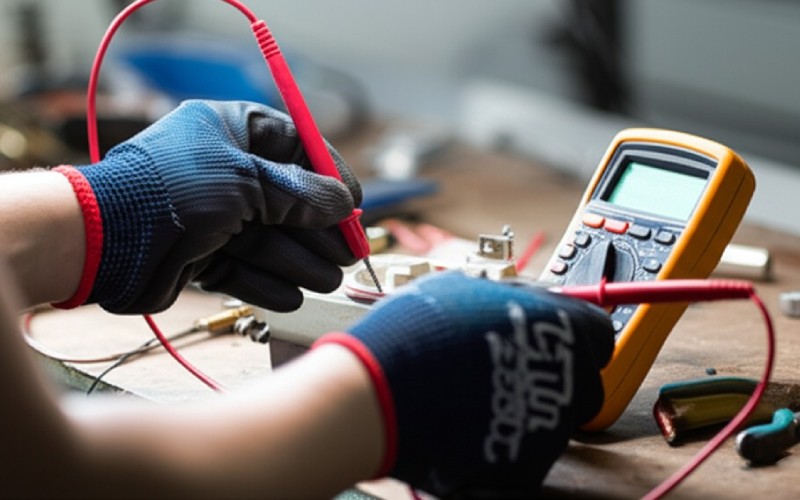Let Sino's Lamination Stacks Empower Your Project!
To speed up your project, you can label Lamination Stacks with details such as tolerance, material, surface finish, whether or not oxidized insulation is required, quantity, and more.

Now you encounter a huge concern: should you attempt to repair it, or is it time to replace it with a new one? This choice can be difficult. It can imply saving a great quantity of money or spending more than you require to. This short article will certainly assist you comprehend when an electric motor repair is a wise move. We’ll likewise see when changing a motor is the better choice. My objective is to assist you make an excellent choice, think of the cost, and maintain your tools running efficiently.
When an electric motor stops, it’s very easy to think the worst. Yet hang on! Before you even think of a big repair or replacement, do some easy checks. Initially, make sure the rotor is not obstructed by something. Can it spin freely by hand (with the power OFF, of course!)? Examine the power supply. Is the voltage correct? Is there a tripped breaker or a blown fuse? Sometimes, the problem is a simple electric concern, not the motor itself. Seek evident indicators like a burning smell, which could show a short or a burnt winding. A quick assessment can save you a lot of frustrations. Basic upkeep checks can inform you a lot.
Choosing to repair an electric motor commonly comes down to cash. Will the repair cost much less than 50-60% of a new unit? If yes, repair might be a great option. Think about the size and sort of electric motor. Big, unique industrial electric motors are often worth fixing. A tiny, common home motor? Maybe not. Additionally, take into consideration the age and problem of the motor’s frame and other components. If the frame is broken or the shaft is severely damaged, a repair might not be possible. An electric motor repair can be wonderful if the failure is a typical one, like a bad bearing or a small winding issue. You intend to guarantee the repaired motor will run efficiently.

Often, obtaining a new one simply makes me feel even more. I have actually seen individuals repair an old, inefficient electric motor, just to have it fail again quickly. That suggests more downtime and more money. If your motor is old, a modern replacement could offer better efficiency. This can save you cash on your energy expenses with time. This is a vital factor to consider. Consider the expense of the replacement motor versus repeated repair costs. Additionally, exactly how vital is this electric motor? If you can’t afford much downtime, a quick replacement procedure might be better. Getting a brand-new one often includes a warranty too. This provides you peace of mind. Many electric motors today meet high EPACT efficiency standards.
One of the most common is bearing failure. Bearings wear out with time, especially with poor lubrication. Another big one is troubles with the winding. The coil wires inside the stator can short out or burn out. This can happen from overheating or voltage spikes. Overloading is a huge enemy of an electric motor. If you make it work too hard, it will overheat and most likely fall short. Dust and moisture are additionally troublesome. They can damage the winding and cause the rotor to jam. In some cases, the trigger is a mechanical problem, like a bent shaft or a damaged frame. Knowing the usual methods they fail assists you place trouble early.
It’s the most effective method to aid your electric motor live a long life and stay clear of a costly repair or replacement. Straightforward things make a big difference. Maintain your motor tidy. Dust and dirt act like an insulating blanket, making it run hot. Heat is a major killer of any type of electric motor. Regular assessment is crucial. Listen for unusual noises. Check for way too much vibration. Make sure the ball bearing or sleeve bearing is oiled properly if required. Examine terminal connections to make sure they are tight. This sort of upkeep can catch little troubles prior to them becoming a huge failure and force you to repair or replace the unit.
If your electric motor hums but will not spin, something is jamming it or the starting mechanism has failed. The first thing I check is if the shaft can turn by hand (power off!). If it’s stuck, the bearing might have seized. A failed bearing is an extremely common reason for a motor to not rotate. You may hear a grinding noise if you try to turn the end of the shaft. It can likewise be an issue with the rotor. If the rotor is harmed or something is caught in between the rotor and the stator, it will not rotate. In some cases, especially in single-phase motors, the starting capacitor could fail. This part assists the motor to begin rotating. If this component is bad, the motor will not start. An excellent examination can discover this.
An electrical short in an electric motor is severe. It generally implies the insulation on the winding wires inside the stator has broken down. This can cause the motor to trip breakers, run very hot, or not run at all. If you believe a short, you’ll need to test the winding continuity and resistance to ground. This is a key test. If there is a short in the winding, a rewind is commonly the only repair option. A rewind means eliminating the old, broken winding and installing a new set of windings. This procedure can be costly and time-consuming. For smaller sized motors, changing the entire electric motor could be cheaper than a rewind. For a huge, expensive commercial motor, a rewind can be an excellent option to save it. The price for a rewind varies.
Initially, they test it to confirm the problem. After that comes disassembly. They take the motor apart, carefully noting exactly how whatever fits. This includes getting rid of the end bells, pulling out the rotor, and examining the stator and frame. Next off, they tidy all the parts. They’ll test the winding for shorts or grounds. If the winding misbehaves, a rewind could be required. Bearings are generally replaced during a major repair. They’ll check the shaft and frame for damages. After replacing or repairing components, they rebuild the motor. After that, a last test is done to ensure the electric motor is running appropriately at the appropriate rpm and voltage. This test is crucial.
You can do some basic examinations on your own to aid choose repair or replacement. Always see to it the power is off and locked out/tagged out (LOTO) prior to your examination! Utilize a multimeter to test the winding. Check for continuity between the terminal leads. An open winding means a break in the coil. After that, test for a short to ground by checking resistance from each winding lead to the motor frame (the metal casing). You can likewise examine the capacitor on single-phase motors if you have the right equipment. Listen for sounds when the motor is running (if it runs at all). Is it too hot or fast? Measure the current draw. Is it greater than the rating on the nameplate? These tests supply hints. A specialist electric motor repair store can do more advanced examinations, like surge tests and core loss tests on the stator and rotor. They’ll additionally test for residual magnetism.

So, just how do you make the final telephone call: repair or replace your electric motor? Please evaluate a couple of things. First, the cost. Get a quote for the electric motor repair. Compare that to the price of a new one. Remember my 50-60% policy. Second, think about downtime. Exactly how swiftly do you need the equipment running? A replacement may be much faster if a spare gets on hand or easy to get. A repair, particularly if it requires a rewind, can take some time. Think about the motor’s horsepower (hp) and efficiency. If your old electric motor is not very efficient, a new, high-efficiency EPACT motor could conserve power prices. This is a huge consideration. Is the failed unit a standard motor or something unique and hard to replace? If it’s a special-purpose motor, repair might be the only feasible means. Your decision to repair or replace should fit your demands and budget plan. There’s no single right answer for every electric motor failure.